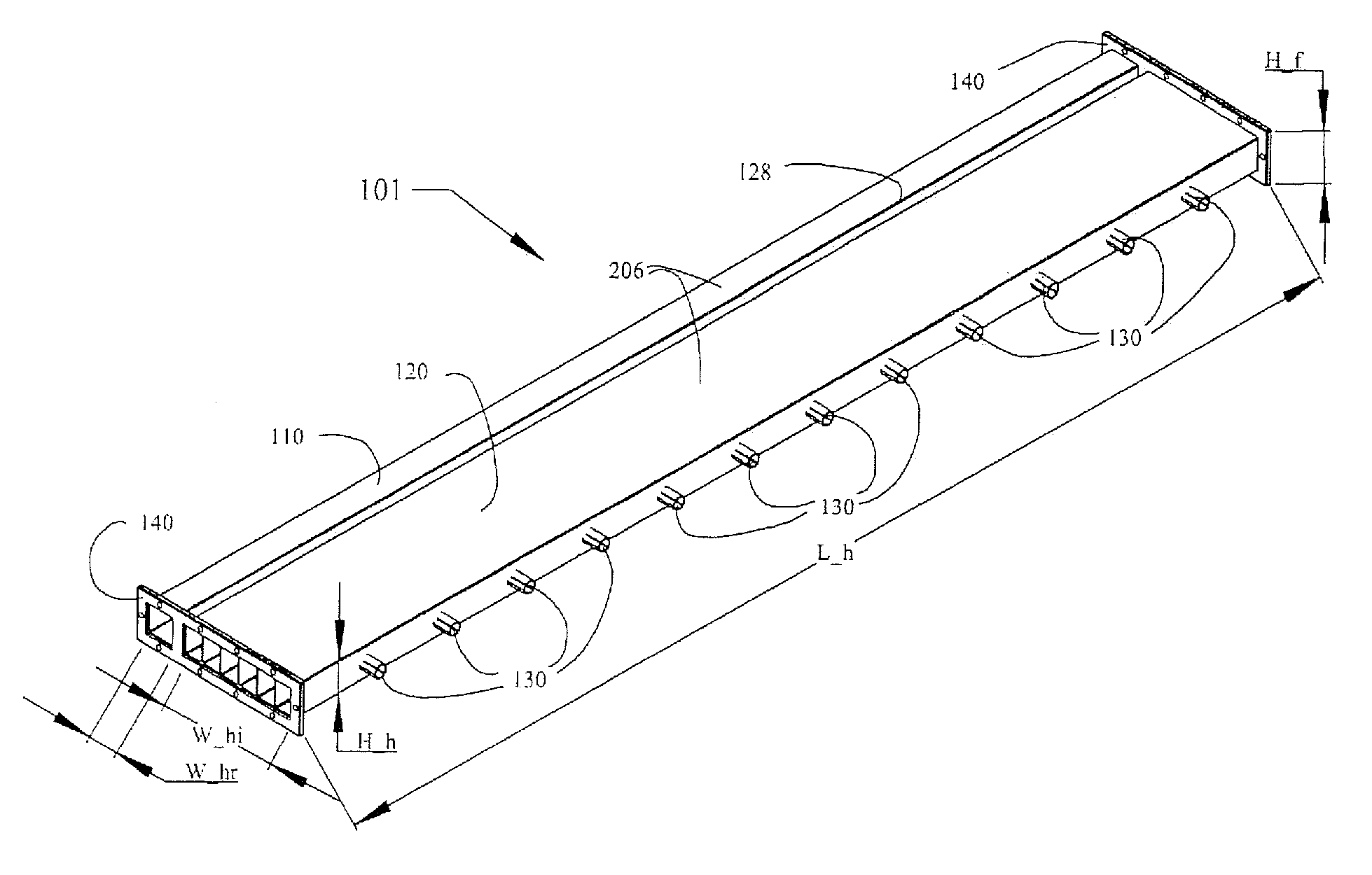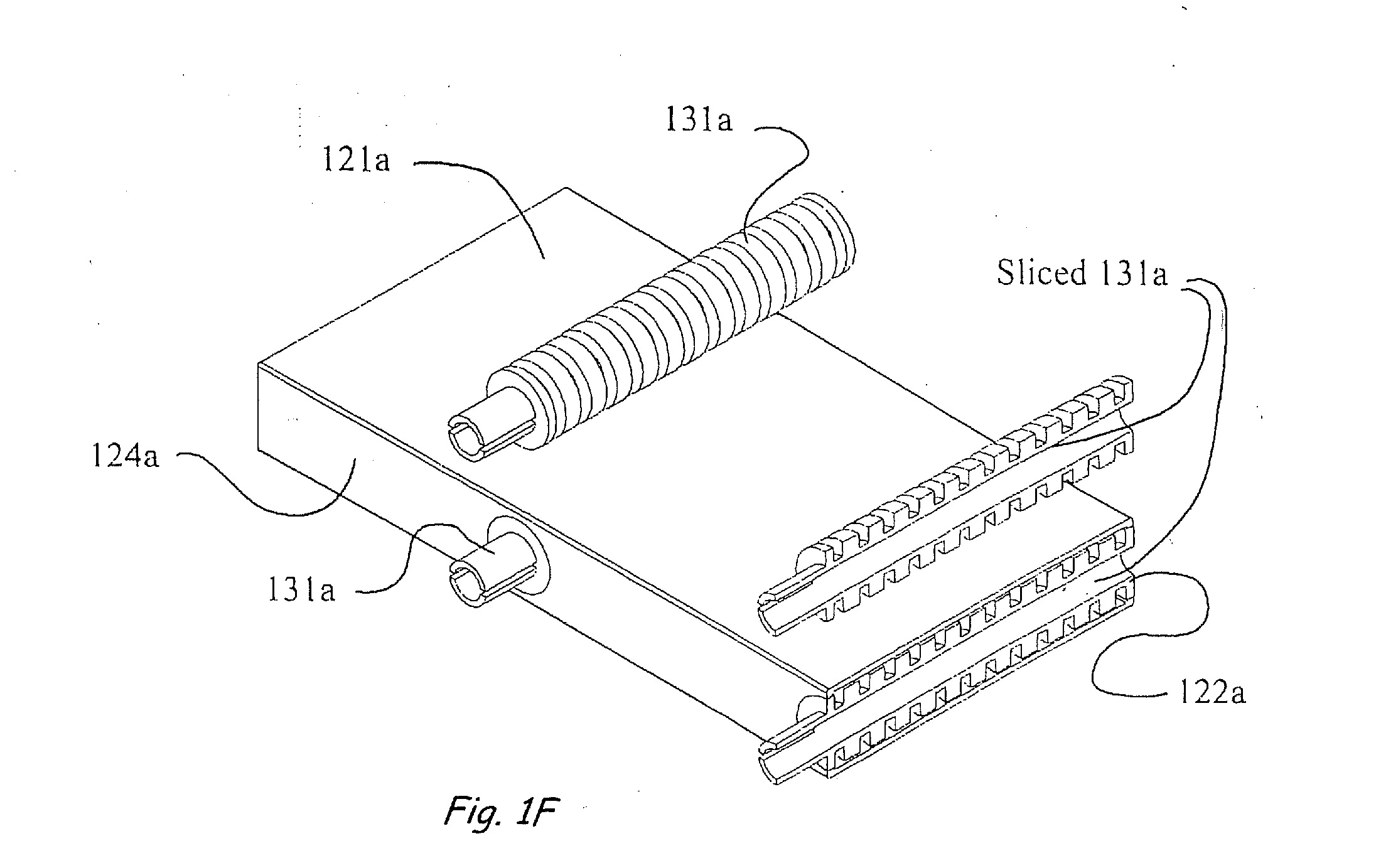Solar heat pipe heat exchanger
a heat exchanger and solar energy technology, applied in indirect heat exchangers, thermal-pv hybrid energy generation, lighting and heating apparatus, etc., can solve the problems of inefficient heat transfer from the heat pipe condenser to the heat transfer fluid flowing through the large diameter header pipe, inconvenient use of tall or thick structures, etc., to optimize electrical generation, optimize use, and reduce the effect of cos
- Summary
- Abstract
- Description
- Claims
- Application Information
AI Technical Summary
Benefits of technology
Problems solved by technology
Method used
Image
Examples
Embodiment Construction
[0038]FIGS. 1A-E are a set of detail, side views of a header assembly 101 showing detail of the header return 110, header inlet 120, heat pipe receiver 130, and header flange 140 components.
[0039]The header return 110 transports returning heat transfer fluid 11 within the header assembly 101 (See FIGS. 2, 5 and 9). The header return 110 is W hr wide, H_h high, and L_h long, and may be Ruined by extruding a suitable material such as aluminum. The header return top wall 111, header return inside side wall 112, header return bottom wall 113 and header return side wall 114 have thickness t_hr and faun the return fluid channel 115. The header return inside side wall 112 is located in near proximity to the header inlet inside side wall 124. The space between the header return inside side wall 112 and the header. inlet inside side wall 124 having width W_i, thermally isolates the header return 110 from the header inlet 120. The header return top wall 111 may be coated with a high absorbtiv...
PUM
 Login to View More
Login to View More Abstract
Description
Claims
Application Information
 Login to View More
Login to View More - R&D
- Intellectual Property
- Life Sciences
- Materials
- Tech Scout
- Unparalleled Data Quality
- Higher Quality Content
- 60% Fewer Hallucinations
Browse by: Latest US Patents, China's latest patents, Technical Efficacy Thesaurus, Application Domain, Technology Topic, Popular Technical Reports.
© 2025 PatSnap. All rights reserved.Legal|Privacy policy|Modern Slavery Act Transparency Statement|Sitemap|About US| Contact US: help@patsnap.com



